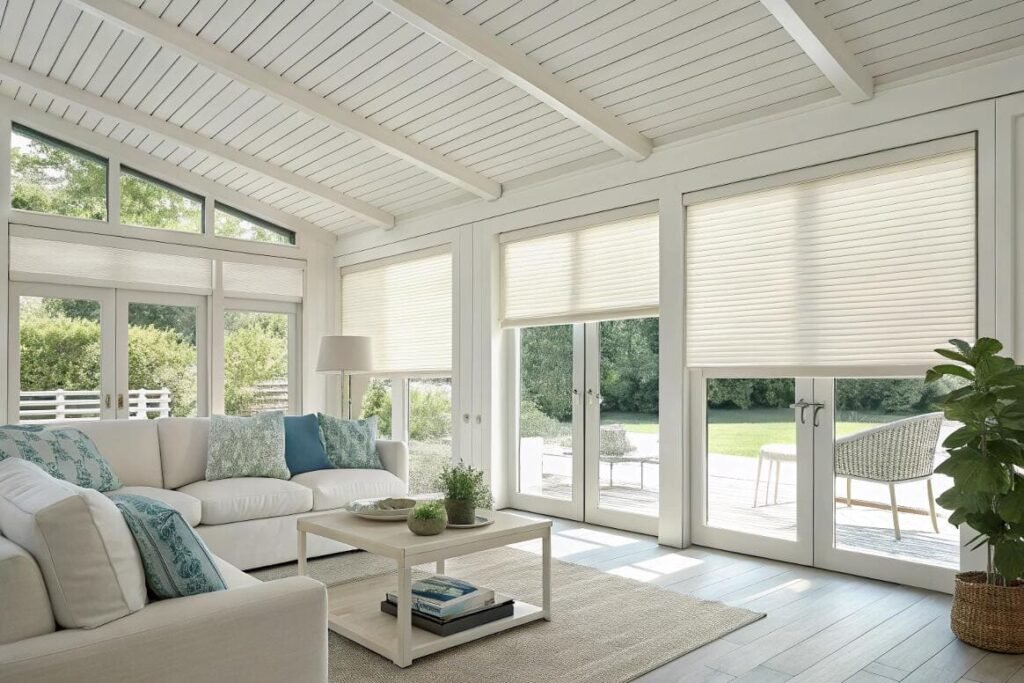Your client has a room that turns into a sauna every summer afternoon. You need a solution that blocks the intense sun, but will blackout blinds actually make the room cooler, or just darker?
Yes, blackout blinds[^1] are highly effective at keeping a room cool. By blocking direct sunlight from entering and heating the room, they can significantly lower the indoor temperature, especially when they have a reflective, light-colored backing.
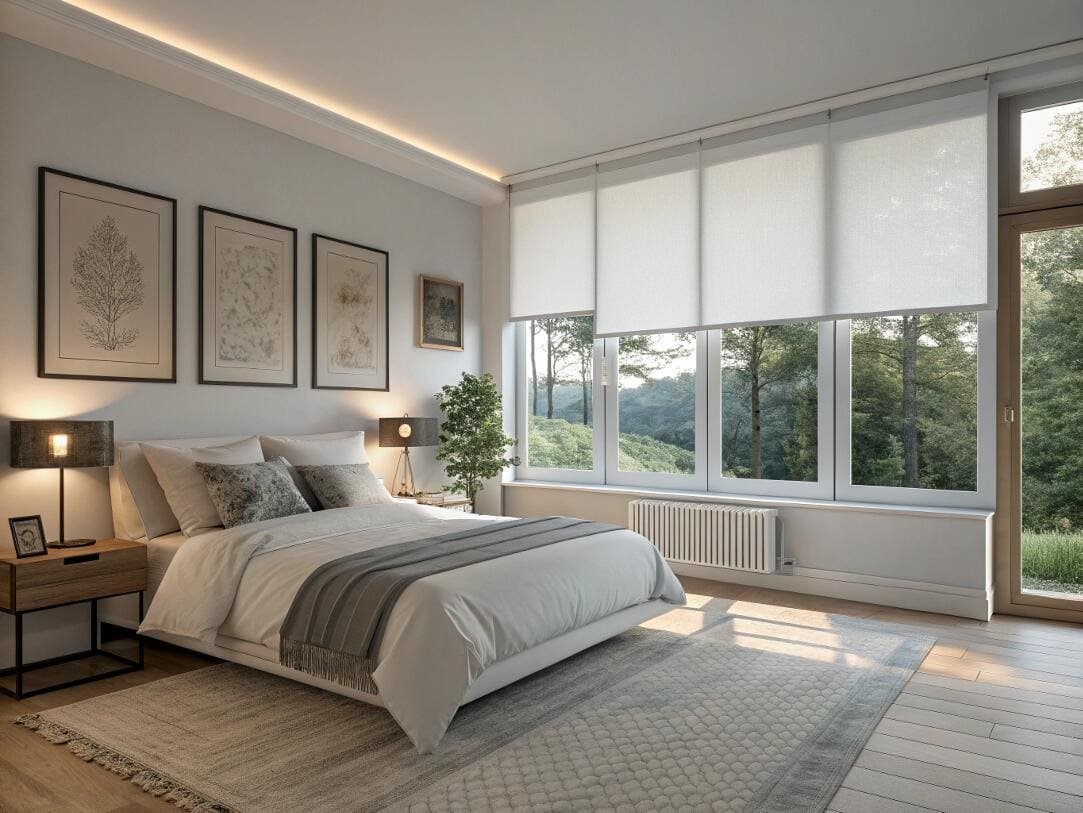
For project managers like Emma, dealing with sun-facing rooms is a constant challenge. The intense solar radiation can quickly overwhelm an HVAC system[^2] and make a space unusable during the hottest parts of the day. A high-quality blackout blind is more than just a window covering; it's a thermal shield. It directly attacks the problem of solar heat gain, which is the primary reason rooms overheat. This is a simple, powerful solution to a very common problem.
What blinds are best for keeping a room cool?
You know blackout blinds are a good option, but are there other choices? You need to recommend the absolute best solution for heat control to solve your client's problem permanently.
The most effective blinds for keeping a room cool are cellular (or honeycomb) shades, especially in a blackout or dual-cell configuration. Their unique structure traps air, creating a powerful layer of insulation against heat.
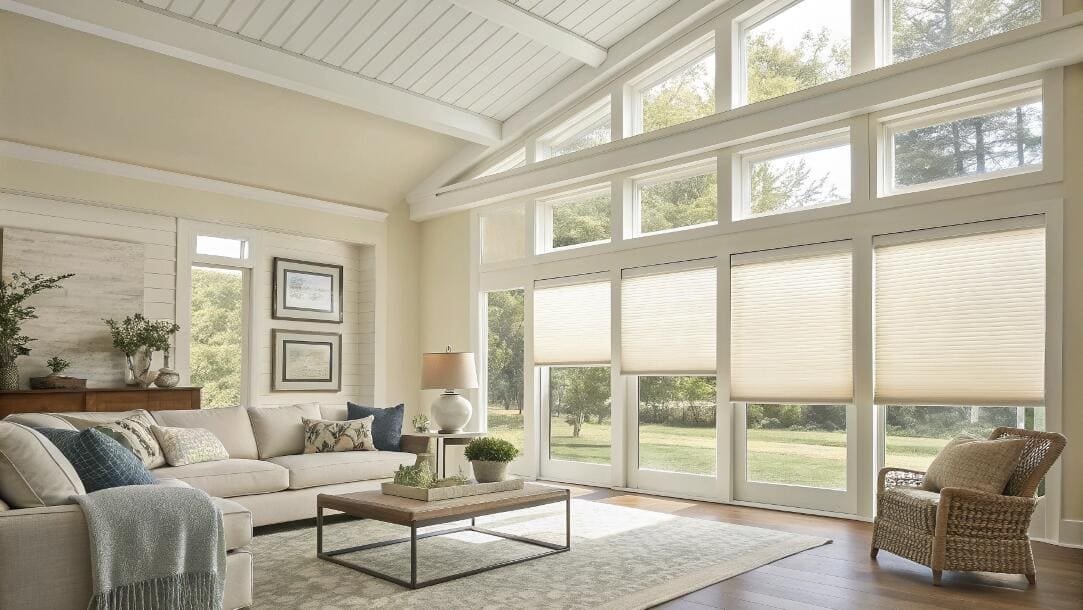
While a standard blackout roller shade is very effective, some materials and designs are specifically engineered for thermal performance. When heat is the primary concern, I guide my clients toward these high-performance options.
| Blind Type | How It Cools | Best For |
|---|---|---|
| Cellular/Honeycomb Shades | Traps air in honeycomb-shaped pockets, creating an insulating barrier that slows heat transfer. | Maximum energy efficiency and insulation in rooms with extreme sun exposure. |
| Blackout Roller Shades | Uses a dense, opaque fabric to block sunlight. Most effective with a white or reflective backing to bounce heat away. | Bedrooms and media rooms where both total darkness and cooling are required. |
| Solar Shades | Made of a special woven fabric that reflects solar heat and UV rays while still preserving the view outside. | Offices and living spaces where you want to reduce heat and glare without losing natural light. |
For a room that gets oppressively hot, I always recommend cellular shades first. Their insulating power is unmatched by other blind types, making them the gold standard for pure temperature control.
How do you keep a room cool that faces the sun?
That one room that gets blasted by the afternoon sun is a common design challenge. You need a simple, effective strategy that doesn't rely entirely on running the air conditioning on high.
To keep a sun-facing room cool, you must keep the blinds closed during the hottest parts of the day. Using a white-backed blackout[^3] or cellular blind will reflect the maximum amount of sunlight and heat away from the window.

This strategy is simple but incredibly effective. The goal is to stop the solar energy before it can get into the room and turn into heat. Letting direct sunlight hit the floor and furniture is like turning on a heater.
Here is the best practice I share with clients:
- Identify Peak Sun Hours: For east-facing rooms, this is the morning. For west-facing rooms, it's the afternoon.
- Close Blinds Proactively: Shut the blinds before the sun starts hitting the windows directly. Don't wait for the room to get hot.
- Choose the Right Color: The exterior-facing side of your blind should be white or a very light color. This reflects the thermal energy. A dark color will absorb the heat, and while it will still block the light, the blind itself will get hot and radiate that heat into the room.
- Open Up at Night: Once the sun is down and the outside air temperature has dropped, open the windows and blinds to let the cooler air circulate and flush out any heat that has built up during the day.
Is it better to have blinds open or closed in hot weather?
It feels natural to want to open everything up on a hot day. However, when it comes to keeping a house cool, your instincts might be leading you astray. The answer is not always what you think.
It is definitively better to have your blinds closed during hot weather, especially on windows that receive direct sunlight. An open blind allows solar radiation to pour into the room, rapidly increasing the indoor temperature.

Think of your windows as passive heaters. When the sun shines through the glass, it heats up every surface it touches inside your home—floors, furniture, and walls. These objects then radiate that heat back into the room, creating a greenhouse effect[^4]. By closing the blinds, you are putting up a shield. The blind absorbs or reflects the sunlight before it can heat up the room's interior. While it seems like you are blocking airflow, you are actually preventing a much larger source of heat from entering. The U.S. Department of Energy confirms that closing window coverings on sun-facing windows can reduce heat gain significantly.
How do these blinds really affect energy costs?
For a commercial project manager like Emma, aesthetics are important, but so is the long-term operational cost of the building. You need to know if specifying a certain type of blind will deliver real, measurable savings.
Professional-grade blackout and cellular blinds dramatically reduce a building's cooling load. By blocking solar heat gain, they decrease the demand on the HVAC system, leading to significant reductions in annual energy consumption and costs.
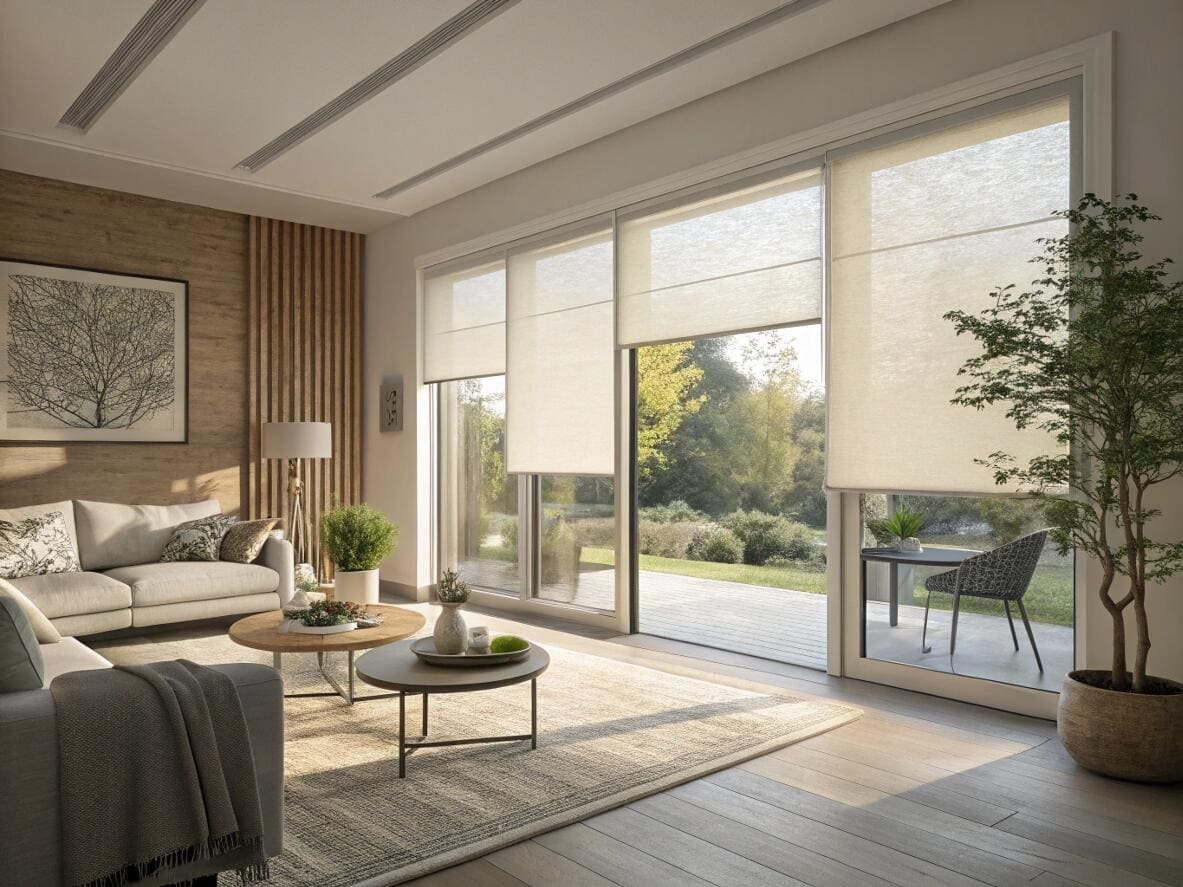
The impact on a commercial building's energy budget can be profound. Windows are often the weakest link in a building's thermal envelope. In a large office with hundreds of square feet of glass, the amount of solar heat gain can be immense, forcing the HVAC system to work constantly to maintain a comfortable temperature. By installing high-performance blackout or cellular shades, you are essentially upgrading the performance of every window. This passive cooling strategy reduces the peak load on the air conditioning system, which not only saves energy month after month but can also reduce the initial capital cost of the HVAC equipment required for the building. For our corporate clients, the return on investment for high-performance blinds is often surprisingly fast, realized through lower utility bills and a more comfortable, productive work environment.
What are the technologies that make them so effective?
You understand the concept, but what are the specific materials and technologies that give these blinds their impressive cooling power? Knowing the technical details helps you specify the right product with confidence.
The most effective blackout blinds use advanced materials like multi-layered fabrics with a white reflective backing and cellular shades[^5] that employ honeycomb-shaped air pockets to create a powerful insulating barrier.

The effectiveness of these blinds isn't magic; it's smart engineering. There are two primary technologies at play:
- Reflective and Multi-Layered Fabrics: The best blackout roller shades are not just a single piece of dark fabric. They often have a three-layer construction: an interior-facing decorative fabric, a central opaque layer that blocks 100% of light, and a white or silver exterior-facing layer. This outer layer is the key; it acts as a mirror, reflecting a large percentage of solar radiation back out the window before it can be absorbed.
- Cellular (Honeycomb) Insulation: This design is pure genius. The pleated fabric is formed into hexagonal cells that trap air. This trapped air is a very poor conductor of heat, so it creates a substantial insulating barrier[^6] between the hot window glass and your room. Double-cell and blackout cellular shades offer even greater insulation, providing some of the highest R-values (a measure of thermal resistance) of any window covering on the market.
How can automation make them even better?
Your client loves the idea of high-performance blinds but is worried about the hassle of constantly opening and closing them. How can you provide a solution that is both effective and effortless?
Integrating blackout blinds with a smart building management or home automation system allows them to operate automatically. They can be scheduled to close during peak sun hours or adjust based on temperature sensors for optimal, effortless temperature control.
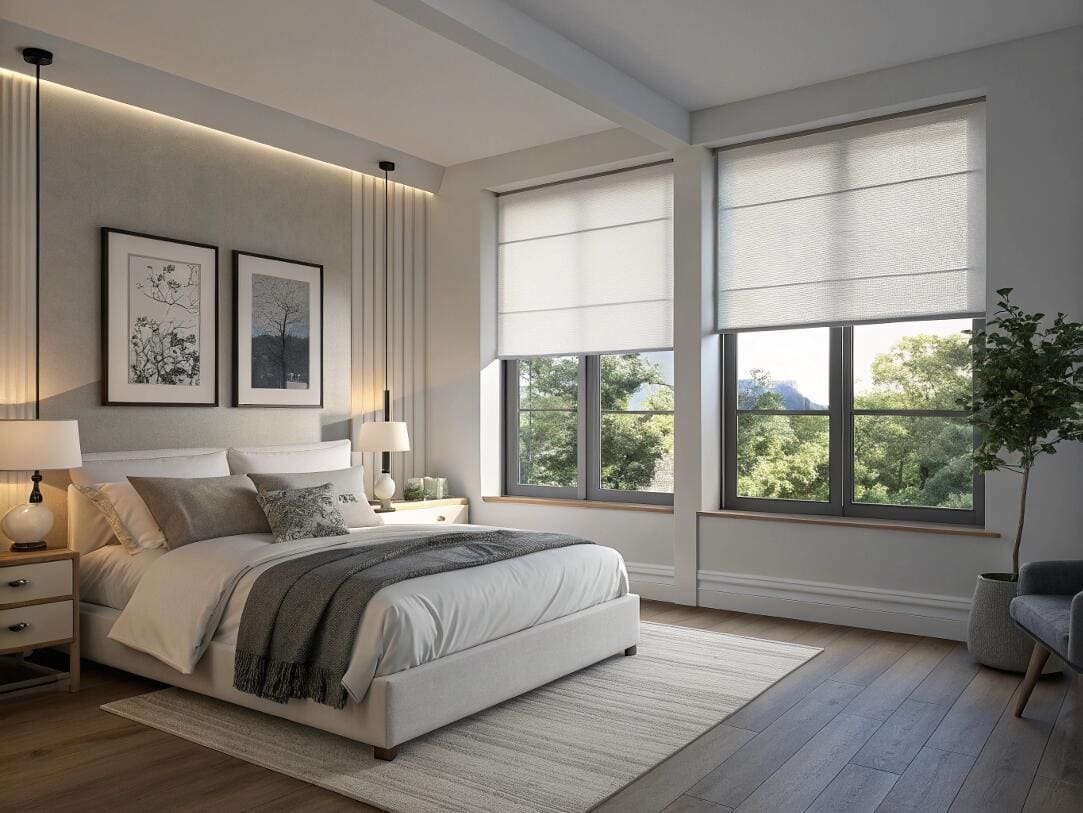
This is where modern technology truly elevates the function of a simple blind. By motorizing the blinds and connecting them to a central hub, you unlock incredible potential for efficiency and convenience. Imagine a system that automatically adjusts the blinds based on the time of day and the sun's position. East-facing blinds close in the morning to block the intense sunrise, then open up later to let in ambient light. West-facing blinds close in the afternoon to fend off the day's worst heat.
This can be taken a step further by integrating with smart thermostats and temperature sensors. If the system detects a room is getting too warm, it can automatically lower the blinds to provide shade and reduce the load on the air conditioner. This proactive, intelligent control ensures the blinds are always in the perfect position to save energy without the building occupants ever having to touch them.
Conclusion
Blackout blinds, especially light-colored cellular and roller styles, are a powerful tool for keeping rooms cool. They block heat, reduce energy costs, and can be automated for maximum efficiency and convenience in any project.
---
[^1]: Explore how blackout blinds can effectively lower indoor temperatures by blocking sunlight.
[^2]: Find out how the right blinds can reduce the workload on HVAC systems.
[^3]: Discover the benefits of using white-backed blinds for maximum heat reflection.
[^4]: Learn how the greenhouse effect can raise indoor temperatures and how to combat it.
[^5]: Learn about the unique design of cellular shades that traps air and enhances energy efficiency.
[^6]: Learn how insulating barriers help maintain comfortable indoor temperatures.Partner with VelaBlinds for Your Next Project
Smart window treatments shouldn't be complicated. After working with 500+ distributors and contractors worldwide, I've streamlined the process to get you quality products, competitive pricing, and reliable support - every time.
Why project professionals choose VelaBlinds:
- ✅ Fast, Accurate Quotes - Detailed specs and pricing within 24 hours
- ✅ Transparent Pricing - No hidden fees, volume discounts clearly outlined
- ✅ Quality Assurance - Direct partnerships with certified OEM manufacturers
- ✅ Project Support - Dedicated account manager from quote to delivery
Start your next project:
📧 Quick Quote: Send your requirements to info@velablinds.com
📱 Direct Contact: WhatsApp +86 137 2012 8317
🌐 Browse Solutions: https://velablinds.com/
📁 Product Resources: Access spec sheets, catalogs & project files
Paul Chen, Founder
"I built VelaBlinds to solve the real challenges I faced as a project buyer - long lead times, unclear specs, and unreliable suppliers. Let's discuss how we can power your projects with smarter blinds."
Serving distributors and contractors across North America, Europe, and Australia since 2018.

